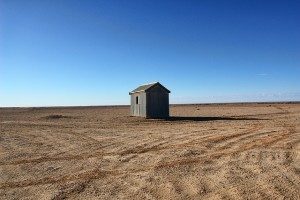And when Jesus had crossed again in the boat to the other side, a great crowd gathered about him, and he was beside the sea. Then came one of the rulers of the synagogue, Jairus by name, and seeing him, he fell at his feet and implored him earnestly, saying, “My little daughter is at the point of death. Come and lay your hands on her, so that she may be made well and live.” And he went with him. And a great crowd followed him and thronged about him. (Mark 5:21-24)
 Jesus is powerful and compassionate, but sometimes has painful purposes.
Jesus is powerful and compassionate, but sometimes has painful purposes.
Power
In Mark 5:21-43, we see:
- A dignified religious leader on his knees imploring Jesus for help
- Jesus heal a chronically sick woman by the mere brush of his garment
- Jesus raise a little girl from the dead as easily as if from a nap
Whether your condition is chronic or acute, Jesus’ power means you can go to him with confidence that he can help.
Compassion
We also see:
- Jesus help an enemy. As a synagogue ruler, Jairus was in league with the Pharisees, who stood against Jesus.
- Jesus help an unclean woman. The woman’s bleeding condition made her unclean in her Jewish culture. Religious Jews did not go near the unclean, let alone help them.
- Jesus help an unable girl. She was dead, and therefore unable to initiate her healing.
Jesus’ compassion means you do not have to get on his good side, clean yourself up or get stronger before going to him for help. He helps first, while we’re still enemies, unclean and unable.
Painful Purposes
Jesus is powerful and compassionate, yet he let Jairus wait and the little girl die. What was he thinking?
Here are some clues from Mark 1-5:
- Jesus’ ministry began with proclaiming, not healing (Mark 1:14-15)
- He traveled around to preach, but never went far out of his way to heal
- In one town, all diseased were brought to him, yet he only healed many (Mark 1:32-34)
- He often withdrew from the diseased crowds to pray
- He often silenced those he healed, so they wouldn’t become word-of-mouth marketers for his healing ministry
- When he saw the faith of the paralytic and his four friends, he didn’t heal him, he forgave his sins. He only healed him to make a point to those who questioned his ability to forgive sins. (Mark 2:1-12)
- He referred to sinners as the sick he came to heal (Mark 2:17)
- He sent his apostles primarily to preach, not to heal (Mark 3:14)
- He said that his true family is made up of those who obey his teachings, not those whom he heals (Mark 3:34-35)
- There is no mention of anyone he healed becoming a close follower
- Everyone he healed eventually died
All these clues point us to one conclusion: Though Jesus can heal and might heal, his main purpose is to call people to faith in him. That is why he allowed Jairus to wait and his daughter to die. He wanted to tell the woman, “your faith has made you well.” He wanted to tell Jairus, “Do not fear, only believe.”
Faith enough to be healed is great. Faith enough to trust and follow Jesus while remaining unhealed is perhaps even greater.
This is his primary purpose for you, which means he might make you wait or allow your worst fears to come true. This does not mean that he is weak or cruel. He is powerfully and compassionately working out a deeper, more eternal purpose in you: saving and sanctifying faith.
Are you in pain right now? Are you waiting for an answer to prayer? Are you enduring tragedy? Have you lost a loved one? Turn to Jesus. Fall at his feet. Implore him. Touch his garment. Tell him the whole truth. Your faith will make you well in deeper ways than you can imagine. Don’t fear, only believe.






